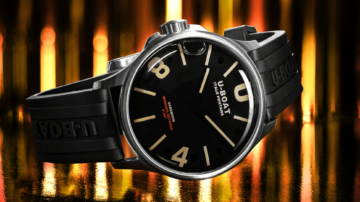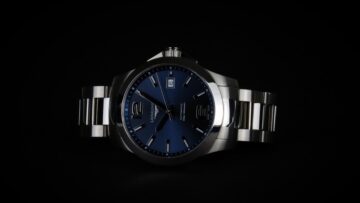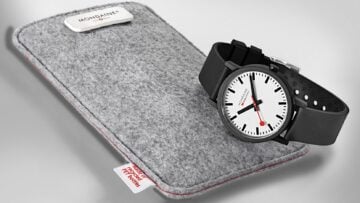Today, British watches are not held in the same esteem as Swiss or Japanese watches, but historically they had a huge role to play in the development of watches. In fact, at one point in history British watches really did rule the world. They were the most innovative, most respected and most accurate watches in the entire world.
So, what happened to them? Read on to find out what happened when British watches ruled the world!
The History of British Watches
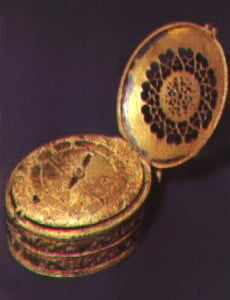
The history of British watches is intertwined with the history of watchmaking worldwide. Early watchmaking took place in Germany in the 16th century and the practise quickly spread around Europe. These watches were designed to be worn as a pedant or attached to a chain which was worn around the neck. The early watches were, unfortunately, pretty useless for actually telling the time – so no-one actually wore them for their accuracy. As they were likely to be wrong by around several hours per day, it was usually only seen as jewellery worn by the nobility.
The early watches were pretty large and rounded, known as Nuremberg eggs. They certainly don’t conform to today’s vision of beauty, but they do have a distinctive look to them and were considered beautiful at the time. More strangely shaped watches appeared over the coming years with watches shaped like books, animals and skulls (!) appearing over the years.
Things changed in the 17th century when men started to carry pocket watches. This was where Britains influence on watches really began to take effect. The rise in pocket watches is said to have started when King Charles II introduced waistcoats in 1665. Interestingly enough, the waistcoat is one of the only items of clothing which can accurately be dated. King Charles introduced the waistcoat during the restoration of the British monarchy, the clothing was derived from Persian vests which they had seen when visiting the court of Shah Abbas.
With the introduction of the waistcoat, the design of watches evolved into a flattened back in order to easily fit into a waistcoat pocket. This new design was so popular that it remained virtually unchanged in pocket watches over the years.
The one problem with pocket watches was accuracy. Pocket watches originally used exactly the same movement that clocks used, a weight attached to a bar which moved back and forth. Unfortunately in a watch this method of keeping time was anything but accurate! The force applied by the spring decreases as it unwinds which meant that the time became less accurate the longer your watch had been running.
Many of the timekeeping innovations over the coming years came about because of the need to resolve this issue, called “lack of isochronism” (yes, I had never heard of an isochronism either!) There were many attempts over the years to try and resolve the issue which has plauged mechanical watches. Admittedly, in today’s mechanical watches, the issue is nowhere near as bad as it once was – but it is still there.
British Innovation
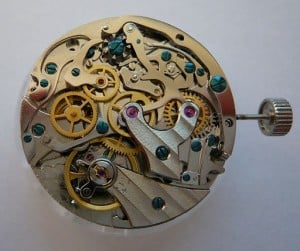
One massive leap forward was the invention of the balance spring in 1657. There is still a dispute over whether this innovation really was a British innovation or not as two people appeared to invent it at the same time. Robert Hooke was the Brit who claimed to invent the balance spring, while Christiaan Huygens also claimed to invent it. The balance spring increased the accuracy of watches from “a few hours wrong” to “around 10 minutes wrong” – which made watches more than just a useless piece of jewellery!
Over the coming centuries Britain became a hotbed of watchmaking innovation. Following the introduction of the balance spring, it made sense to display the time in minutes, not just hours. Daniel Quare introduced the minute hand in 1690, with it, I imagine, inventing the “do you have the time?” question many of us are asked on a daily basis by our non-watch wearing friends!
The escapement was a huge part of innovation in Britain over the coming century. The cylinder escapement was invented by Thomas Tompion in 1695, it was then developed further by George Graham (not the Arsenal manager) in 1720. The leaver escapement, which is still used in many Swiss mechanical watches today, was invented by Thomas Mudge in 1755.
British watchmakers continued to innovate throughout the next century. The chronograph was invented by Thomas Young in 1807, keyless winding by Thomas Prest in 1820 and, moving into the 20th century, John Harwood invented automatic winding.
British Popularity

British watchmakers weren’t just incredible innovators, at the time they made some of the best watches in the world. Owing to their incredible quality, they were also the most popular watches in the world. In 1800 Britain’s output was 200,000 watches per year, which equated to around half of the watches produced worldwide.
Looking back, the warning signs that their may be trouble ahead for British watches can be spotted around the early 1800’s. Britain’s watch industry relied on its skilled workers to produce quality timepieces by hand. The quality of Britain’s watchmakers was there to see, but the rest of the world was following a different track
Around the rest of the world, watchmakers were trying to find ways to mass produce watches at a cheaper price. The cheaper price of production would mean more profits, but it would also mean a wider market of people to sell these watches to.
Switzerland started the trend with their établissage system, which basically meant that different parts of the watch were produced around the country and then assembled together. Interestingly enough, Swiss manufacturers often used this system to make cheap replicas of British watches!
This increased Swiss output, by 1850 they were producing 2,200,000 watches per year while Britain were still only producing 200.000. However the quality was not high, which was why Britain kept the edge over Switzerland when it came to selling high quality watches.
The decline of the British watch industry didn’t really owe itself to Switzerland, nor any other competitor, but by an unwillingness to change. All of the innovations over the 17th and 18th century helped improve British watches, but they had gone as far as they could do by relying on skilled craftsmanship. The only way to improve the British watch industry would be to increase the output while maintaining the quality.
Pierre-Frédéric Ingold already believed in the 1830’s that watchmaking had gone as far as it could without some form of mechanisation. We outline his story in the History of the Swiss Watch Industry Part One, but his story in England is a very interesting one. When he came to England he set up a new company called the “British Watchmaking Company” and the aim to produce cheap watches made by machinery. His hope was to increase output, while keeping all manufacturing in house and to distribute these watches worldwide.
Ingold had brought a number of machines with him which he had designed in France which would have greatly improved productivity. He believed that he could produce 200-300 watches per day, which was a huge increase on watches produced by hand. Ingold believed that these innovations, which could only help the British watch industry, would have been welcome at the time.
They weren’t.
British watchmakers had a lot of pride in their work, believed that British watches were the best and were unwilling to change their ways. Watchmakers in Britain immediately set about by attacking his reputation and even physically attacking his factory. Complaints reached the House of Commons who were preparing to vote on Ingold’s company’s limited liability structure – which they voted against.
Ingold was forced to return to Switzerland, then on to the United States – where his ideas were much more popular.
This was the start of the real decline of the British watch industry. As America and Switzerland started to embrace machinery, Britain’s watch industry stuck to the same ways. It wasn’t long until the quality of a watch manufactured using machinery was as good, or better, than a watch made by hand. This was disastrous for the British watch industry. Watches manufactured using machinery cost a lot less to produce than watches manufactured by hand. In the end, the British watch industry collapsed altogether, in 1900 British output had declined to 100,000 even though millions of watches were being produced a year.
British Watches Today
The story of the British watch industry is a cautionary tale for those who are reluctant to embrace change. Who knows what would have happened if the British Watchmaking Company had been allowed to take off. Would British watches have ended up enjoying the popularity and respect that Swiss watches have today?
Who knows, but it is telling that by the 1900’s a watch trader in Britain deciding to produce his own watches went to Switzerland to find a company to manufacture them. The company in question went on to become Rolex, the most successful and revered luxury watch manufacturer in the world.
British watches still exist today, but they are pushed to the wayside by the giants of Switzerland and Japan. But British watchmaking still lives on with the innovations that you see in every mechanical watch which is still made today.
So, even if it says “Swiss Made” on the dial, your watch still incorporates a lot of British heritage.
Images: Martell, Vaughan Leiberum from Cape Town



